18 Sep 2024
The Blueprint for Building an Engaging Education App Like Byju’s
Shaun Bell
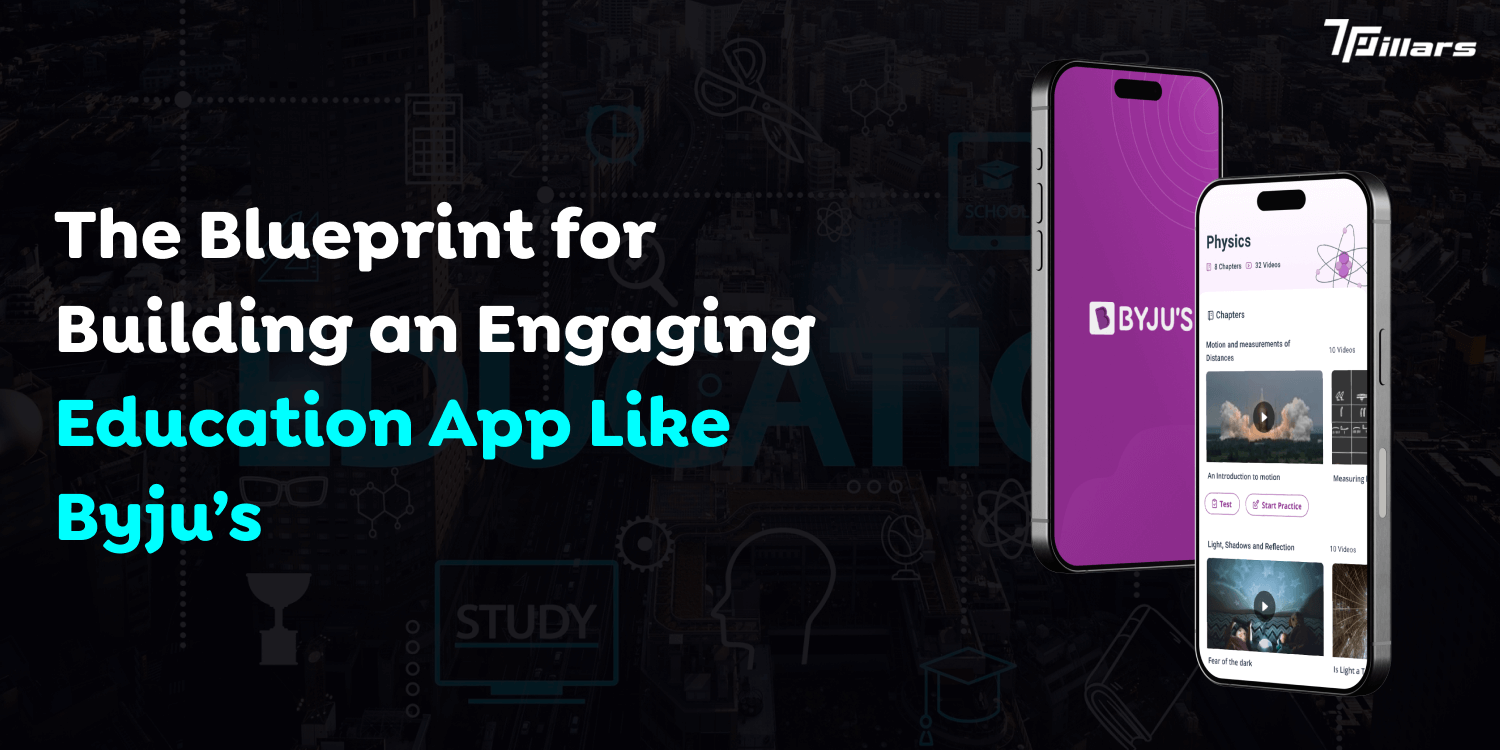
Imagine an education that is not a series of monotonous lectures and rote memorizations but an engaging adventure where every lesson is a revelation. Welcome to BYJU’S: a revolutionary way of learning and succeeding with millions of students.
In the time of digital innovation rewriting ways of doing things across industries, educational technology leader BYJU’S is at the forefront of making traditional learning “upside-down.” Curiosity becomes the centre stage when age-old educational approaches become secondary to discovery.
Everything needs a change, including our traditions or cultures, forcing everyone to move and change with time to ensure they aren’t left behind in the past regretting their life choices. Education is one such field that has changed for the better, with technological advancements significantly enhancing students’ experience with e-learning.
Didn’t you find it sad to be sitting in a classroom full of students with no one paying attention to your needs? Weren’t you scared of asking your teachers the same question numerous times? Thanks to regular technological advancements, students no longer need to fear their teachers to clear their doubts or leave their houses to get their education.
The continuous changes in the technological realm have given birth to one such tool known as Byju, an online learning platform for a student that has created waves in the education sector by making it possible for students to complete educational courses for a fraction of the price they would have to shell out in school learning and tuition classes.
The online learning platform has been a part of several controversies recently, leading to doubts creeping into the minds of entrepreneurs and app development companies regarding creating a similar platform for students.
The Rise and Fall of Byju’s in the EdTech Market
Even though the platform isn’t doing well in the market due to several wrong decisions on the founder’s part, it used to be one of the most sought-after online learning platforms a while back, giving tough competition to other earning platforms like meritination.com.
One of the reasons behind the tremendous success achieved by the online learning platform is that it came into existence when students needed quality education, and schools failed to provide the same.
Byju is not just a learning app; it is the vibrant centre of active learning, engaging the child to achieve their finest potential through technology that is at par in combining interactive video lessons, customized pathways, and instantaneous feedback with education that is both accessible and entertaining.
The depth of content infused into the design ensures that children are active participants rather than information-passive recipients in the learning process.
From interactive quizzes triggering competitive spirits to comprehensive analysis guiding improvement, BYJU ensures a holistic approach catering to diversified learning styles.
Whether you are a high school student preparing for competitive exams or a parent seeking the best tools to help your child get the best education, BYJU’S gives you efficient tools with a unique approach.

Growth Of Byju’s In Australia-
Byju has managed to influence the information style for everyone around by encouraging them to adapt to the changing educational needs and demands to help students with different needs get equal attention and support.
BYJU’S is the ed-tech leader and a company growing by leaps and bounds worldwide, including Australia. BYJU began its journey in 2011 in India, evolving from a local tutoring service into today’s global education powerhouse, revolutionizing learning through its innovative digital platform.
-
Global Expansion
BYJU’S has quickly grown since going global. As of 2023, the company had reached over 150 million users across more than 100 countries. With multiple products catering to diverse markets, from K-12 education to test preparation and even coding for kids, it’s no wonder that the acquisition of such firms as Osmo (US) and Tynker (US) speaks of the thorough approach by the company in incorporating its business globally along with its pursuit of offering more new content within education.
-
Rise in Australia
BYJU has been increasing its foothold in the Australian market since its foray. By the middle of 2024, BYJU had reached more than 1.5 million downloads on its app, demonstrating the rapidly building interest in its learning solutions.
The Australian market has particularly responded well to BYJU because it focuses on personalized learning and aligns with the Australian curriculum. By collaborating with local educators and institutions, BYJU strives to make the content more appealing to Australian audiences by modifying the content according to the educational standards and needs of the region.
In addition, BYJU has invested in local marketing and partnerships to deepen its roots. Partnerships with Australian schools and education bodies further enable deep integration into the local educational ecosystem. The company offers interactive video lessons and adaptive learning technologies, which resonates well with Australian students and parents seeking additional learning resources.
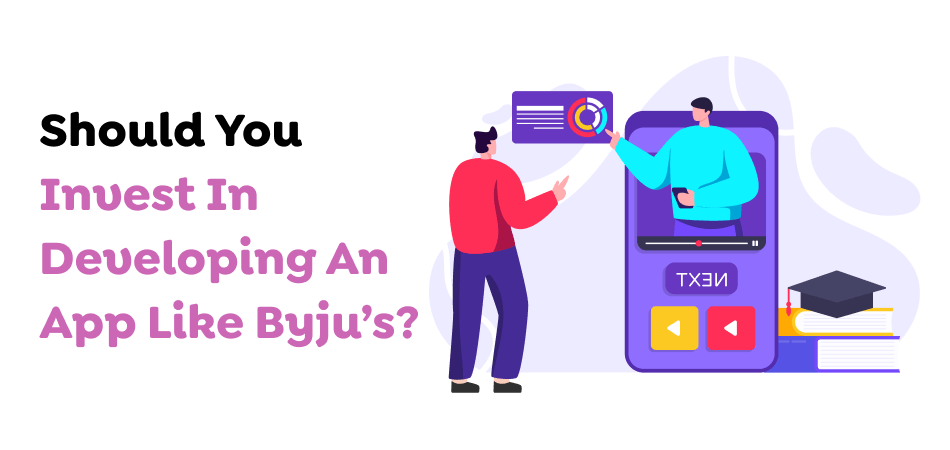
Is It A Beneficial Decision To Invest In Developing An App Like Byju?
Even though Byju’s became a turning point in the educational sector, entrepreneurs are still sceptical about investing in a similar app, as everyone knows a field with competitors is the one to invest in if you want to succeed in the market. Technological history points out that a market that enjoys robust competition is the one to invest in as it is the one that does well among users.
The primary cause behind this phenomenon is that a business does well among users only when it strives to provide high-quality content and services to users that give them a competitive edge over their competitors. Creating an app similar to Byju is okay if you provide your users with enough unique features to help them stand apart from your users.
If you cater to your users and provide them with features they enjoy, it will help retain them and encourage them to switch from your competitor’s app to yours.
Additionally, investors will come to your aid if your proposal is as innovative as Byju’s. The global eLearning industry is expected to grow from $295.97 billion in 2023 to $916.83 billion in 2030. Thus, investing to create a similar app is a brilliant idea.
Currently, one should invest more in educational app development since there is a high demand for digital learning solutions coupled with rapid technological advancements. In the education sector, technological innovations are widely adopted, thus providing an opportunity for ground-breaking ideas to make a brilliant impact.
Once you have a promising concept, you must present it to an elite education app development company. The companies are those experts who will better help refine the idea, translate it into a functional and engaging app, and finally bring it to the market. This opportunity leads to significant growth and success through the developing landscape of education technology.
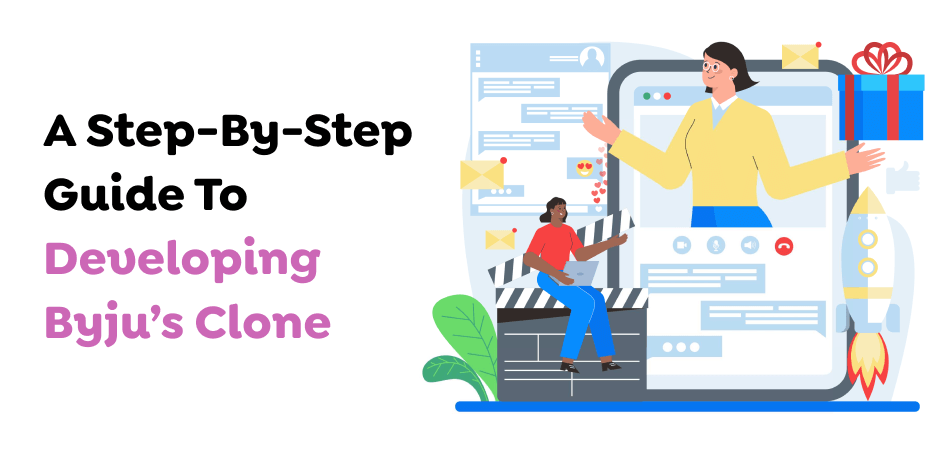
Step-By-Step Guide To Creating An App Like Byju–
Different people employ different processes while they are constructing an application. To ensure their successful launch into the market and to increase their applicability, all products and consumers require basic components.
Though everyone’s needs are unique, for an application to succeed in the market, developers must follow certain conventional practices, particularly if they want to replicate an already-existing program.
Generally speaking, creating an educational app comparable to Byju takes a lot of time and money, especially when a professional team of engineers, designers, content planners, and marketing specialists is involved. The scope of work, the number of developers working on the project, the features themselves, recommendations, offline access, and many other factors will all affect the overall anticipated cost and duration.
The platforms or solutions that are currently available indicate that working with industry professionals will simplify the process and cut down on time wastage by decreasing complexity. Any service like Byju must go through several crucial stages of development, including strategy and market research, app development, content acquisition, legal considerations, testing, launch, and ongoing service maintenance. Here’s a summary of the same:
1. Market Research And Planning–
Before you start your journey to developing an app like Byju, you need to understand what works for your target audience and what your competitors are doing that isn’t working for them. The first thing you need to do is decide your target audience, demographics and the educational needs of your users to ensure your app is successful once launched among users.
You also need to understand that a bright idea isn’t the only thing that will ensure an app’s success, but multifaceted factors play a significant role in assuring an app’s success. After you have finalized your app idea, start working on understanding industry trends and the latest technologies that you must incorporate into your app to guarantee users switch to your app from your competitors.
For your application to take advantage of new technologies or change users’ preferences, you must conduct a thorough analysis of industry trends. In addition to ensuring that the application will satisfy the user’s needs, this will help present value from a competitive standpoint.
2. Define Your Apps’ Objective And Concept–
An app is successful in attracting and retaining users if it’s open about its objective and concepts that cater to unique user needs without fail.
It must mention the application’s purpose and describe which specific learning objectives it is intended to deliver. This step is drawn from a detailed review of the features that your app would provide like Byju offers its users and more alike. You will then understand how you structure your application to serve the users’ needs.
Therefore, it is pivotal to discover and develop unique selling propositions that will allow your custom education app to be different from your competitors. Concentrate on being innovative and distinct, be creative in developing a value proposition that users cannot ignore, and, in the long run, will stand out amidst the overcrowded education technology marketplace.
3. Design User Interface–
Once you have planned your app and its objective, you need to start working on designing the app’s user interface to ensure it is clean and innovative to attract users towards your app. An aesthetically pleasing design attracts users.
To visualize the layout and navigation of the app, wireframes and prototypes must be created naturally. Hire a reputable app development company to help you design an innovative user interface with bold and visually appealing designs to attract users.
Ask your education app development services to help create a user-friendly interface with simple navigation to improve the user experience. It’s also pivotal to ensure your educational app works well on several screens and devices.
4. Choose Platform And Development Approach–
This step in developing an app like Byju is crucial as you must decide which platform to launch your app after its completion to ensure it is successful post-launch. There are more than a few platforms available in the market that can be used to launch an app, but you have to choose between creating an app for a single platform or multiple after deeply researching the market.
Once you have selected your platform, you should choose a development approach that matches your budget and hire an app development company which can deliver your dream app within your budget. A reputable education app development company will help you set up a development environment and establish coding standards for consistency and efficiency.
5. Content Creation And Curriculum–
Content should be your foremost priority while creating an app like Byju, as it will help you gain and retain users if you provide them with high-quality content different from your competitor’s content.
You must collaborate with subject experts available in the industry and incorporate interesting quizzes and interactive lessons to offer an immersive learning experience to your users.
Apart from incorporating quizzes and video lessons, add and organize your content into structured modules and classes aligning with educational standards and learning objectives. These elements will assist you in creating an app that succeeds as Byju.
6. App Development And Testing–
At this point, your developers of the educational application should get your concept off the ground by designing an app similar to BYJU and following all the specifications and design rules.
Some elements need to be included to make it more appealing to users, such as video playback for interactive lessons, quizzes for tracking learning progress, progress tracking for monitoring user achievements and personalized user profiles catering for unique educational experiences.
On completion of the first stage of development, it is pivotal to carry out thorough testing to certify that everything about the app works perfectly well and it conforms with defined quality benchmarks. It involves identifying bugs, mistakes, or performance problems that may not meet user satisfaction.
A reputable Android app development company employs many types of testing, including unit tests, which check individual components; integration tests used for checking how different parts of the app function together; user acceptance tests, whose objective is to ascertain if the expectations from customers are met and automated tests which help do repetitive tasks effortlessly. In-depth testing guarantees an efficient application with its best quality is ready for launch.
7. Launch And Deployment
Once you have checked all the boxes and are sure your app is bug-free and ready for launch in the market, work with your hired team of app developers to prepare a comprehensive launch plan involving app store optimization (ASO) strategies and various marketing campaigns.
An Education app development company will help you submit the software to app stores for review and approval. There won’t be any issues with the seamless launch of your app once you have adhered to the app store’s standards and requirements. Monitoring the app performance for 2–4 weeks and getting user feedback after launching your educational app like Byju is vital for iterating and improving it to ensure an enhanced user experience.
8. Continuous Improvements And Updates–
You could be thinking about how it is possible to gather user feedback. The answer lies in reviews, ratings, and surveys that can help you identify things that need improvement. Nowadays, people work within the digital environment and engage in various activities. Because of this, users are likely to have less patience, and as such, any educational app like BYJU’s has to remain relevant and engaging.
Incorporating new features, content, and other improvements into the mobile application increases the interest and the user’s emotions. In addition, it is pivotal to be aware of new trends in technologies and products to be competitive and bring novel ideas to the market. Therefore, you are so dynamic and sensitive that with changes in user needs and industry changes, you will be very efficient and appealing in your app.
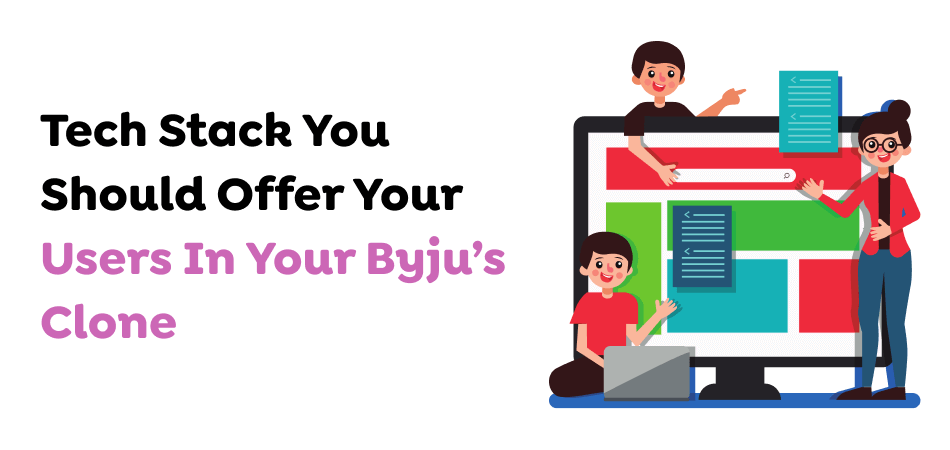
Tech Stack Necessary For Building An App Like Byju–
There is a growing trend for Byju’s like apps, which need a robust and scalable tech stack. Each component the app may require to support this stack includes:
- Frontend development: Languages: HTML5, CSS3, and JavaScript are primary for rendering the minimal app structure, styling, and interactivity.
- Frameworks/Libraries: React.js or Angular for creating dynamic user experience; alternatively, cross-platform mobile apps can be developed using React Native or Flutter.
- Design Tools: Figma or Adobe XD to create a user-friendly interface.
- Backend Development Languages: Python with one of the two most popular versions
- Choose Django or Flask, Node.JS and Express, or Java for server-side code hidden under Spring Boot.
- Frameworks: Django and Flask for Python, Express.Js for Node.JS, Spring Boot for Java – to get development going in the shortest possible time and provide the necessary functionality.
- Database Management: SQL databases like PostgreSQL or MySQL for structured data, NoSQL ones like MongoDB for unstructured or semi-structured data.
-
Cloud Services and Hosting:
- Cloud Providers: One needs to have a scale-out cloud infrastructure.
-
Services:
- Use Amazon Web Services (AWS) S3 for storage, use either EC2 or Google Compute Engine for virtual servers, and use AWS RDS or Azure SQL Database for managed database services.
-
Features of Real-time:
- Push Notifications: Firebase Cloud Messaging (FCM) or OneSignal to engage your users with real-time alerts and notifications.
- Content Delivery Network (CDN): CDN Providers: Akamai, Cloudflare, or AWS Cloud Front for faster and more efficient multimedia content delivery over various geographies.
- Security: Authentication: OAuth, JWT, or Firebase Authentication for secure user management and login processes.
- Data Encryption: TLS/SSL for secure data transmission and encryption standards such as AES for data storage.
-
Analytics and Monitoring:
- Analytics Tools: Google Analytics, Mixpanel, or Amplitude will help you understand user behaviour and app performance.
- Testing Tools: New Relic, Datadog, or Sentry to monitor performance and track errors.
- Testing Frameworks: Jest or Mocha for unit testing and Selenium or Cypress for end-to-end testing to ensure proper functionality and efficiency of the app.
- This integrated stack will provide a scalable, secure, high-performing educational application like Byju’s.
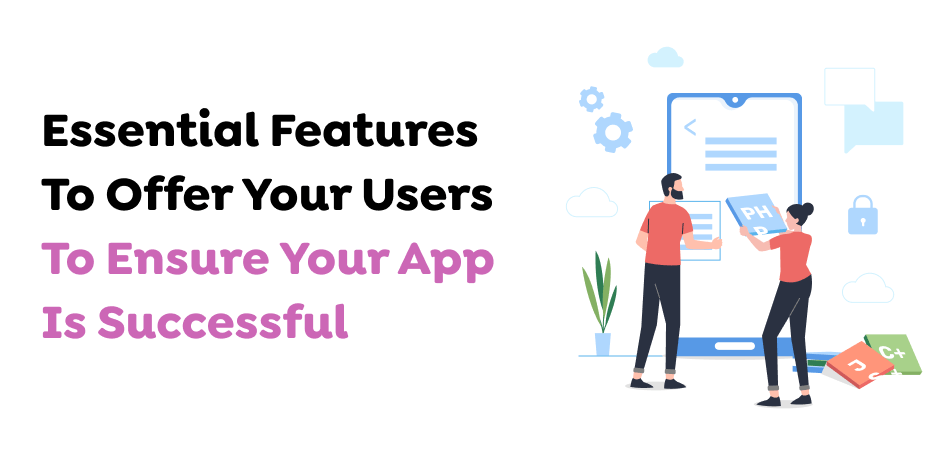
Key Features To Have In Your App Like Byju-
In-app messaging and chat capabilities encourage better cooperation among app users by permitting effortless communication. It helps create a social environment in those apps by making it very simple for the user to connect with friends who are also using that specific app.
They discuss their favourite lessons, provide suggestions for brand-new tests and interactive courses, and share their experiences from earlier courses they are now reviewing. Apart from offering a personalized learning experience, this interactive approach cultivates a feeling of community among users.
Using the app to establish direct relationships with other users helps create rich and dynamic experiences that make cooperative education exploration fun. Social contact of this kind turns lonely listening into a shared experience.
1. User Registration–
Users must register or establish accounts using a social network account, email address, or other means of identification. With the help of these IDs, users can efficiently save their choices and enable personalization each time they access a service or app.
It is possible to store user preferences, favourite content, and behaviour- and interest-based suggestions by including the registration process. This will also result in unique features and services, like special deals or material just available to you.
As a result, this will operate as an agent to increase customer pleasure by offering a considerably more customized and dynamic way to use the platform. If you want to incorporate the newest features into your app, a reliable app development company is your one-stop shop.
2. Browse And Search Courses-
When you plan to develop an app like Byju for your users, incorporate browse and search functionality to help users seamlessly explore and find their favourite educational content and teachers. Ensure it contains a user-friendly interface with intuitive search functionality, allowing users to enter keywords, filter results by subjects, levels, or categories, and view course details.
The browsing experience is enhanced by categories, tags, and recommended courses based on user preferences and history. Advanced search options enable users to sort by relevance, popularity, or newest additions.
3. Course Detail–
Information about all the courses created will be available in the course detail feature to assist users in making an informed choice. It will have details like title, description, syllabus, prerequisites, instructor’s profiles, and duration.
A user can check on reviews and ratings that the preceding students provided and look at the deadlines for enrolment apart from finding pricing or subscription options. Video or sample lectures may also be included as multimedia resources for a preview. The feature makes it easy to evaluate the relevance and quality of a course for enrolment.
4. Purchase Course-
Course purchases are integrated into an education application to streamline the purchasing process. Users can browse existing courses, read detailed descriptions, and compare relevant pricing options.
This feature will hook into secure payment gateways to ensure smooth transactions through credit/debit cards, digital wallets, or bank transfers. A user can see their payment history and retrieve receipts within the app. Another way of engaging with users is by offering discounts or promo codes.
This feature can easily be filtered to show relevant courses based on a user’s learning preferences, making it an important feature to increase both convenience and sales for educational platforms.
5. Take Test–
The “Take Tests” feature in an education app helps students to gauge knowledge. It includes multiple formats such as choice, short answer and questions prepared to meet the requirements of different learning levels.
Instant feedback with detailed performance analysis helps a student identify his strengths and areas of improvement. The reports are helpful for the tutors to track progress and test customization, as well as timed assessments, enhancing preparation for exams. Active learning contributes to student engagement and better academic performance through regular practice and timely evaluation.
6. Track Shipment–
The “Track Shipment” feature allows the education app to automatically track the shipment status of educational materials, such as textbooks and study kits or equipment, for users to access the delivery status in real time.
It allows students, teachers, and administrators to track the orders of the resources immediately; therefore, they are received in good time. With this approach, shipping services can be integrated with shipping progress notifications, estimated dates of delivery, and tracking history.
Therefore, from such a perspective, the “Track Shipment” feature is where improvement in the convenience of users ends, minimizing delays, and resource management becomes efficient in education.
7. Learn–
The core of any learning experience is a “Learn” feature. There are always interactive lessons, videos, quizzes, and personalized content. Often, this may be customized to fit different learning styles, providing multimedia formats in text, audio, or even visuals. Most features contain the possibility of tracking, allowing learners to monitor their achievements and stay motivated.
Learn” feature encompasses AI-driven recommendation, which helps the user determine where their weakness is. By inducing engagement via gamification, for example, through badges or points, the feature achieves an immersive experience in a well-structured learning environment designed to boost knowledge retention and skill development.
8. Practice Feature–
This education app feature gives students a means of reinforcing their learning through interactive exercises and quizzes. It allows the learners to practice given on their track of progress, which can help them strengthen weak areas and retain knowledge. The feature can also adjust to levels of skill variation so that some can have a combination of challenges and feedback to improve continuously.
Gamification aspects like rewards and tracking of progress support inherent motivation and engagement. It is the appropriate tool for independent learning in the class, allowing learners to become confident and master a subject through good practice design simulating real-life or realistic assessments.
9. Quizzes Feature–
The feature of quizzes in an education app enhances learning by providing interactive assessment. It allows students to test their knowledge in real-time, all with immediate feedback. Customizable quizzes enable the educator to track the student’s progress and tailor content to individual needs.
Gamification features, such as scores and rewards, make learning unique and entertaining. Self-paced quizzing can be used within curricula to guide students through distinct subject matter, pinpoint their weaknesses, and maintain motivation. This feature fosters active participation and better understanding in an attractive, web-based learning setting.
10. Practice Feature
An education application may facilitate learning by practising the knowledge graph feature, which organizes and links large amounts of information. The knowledge graph visually represents the relationships of concepts and empowers students to explore topics in greater depth. Integrating related ideas fosters critical thinking into complexly understandable subjects.
Additionally, knowledge graphs permit personalized learning through content tailoring to the user’s progress and preferences. This helps both the teacher and learners to identify knowledge gaps and areas that are targeted for more focused teaching. This interaction tool intuitively revolutionized how students relate to their information and how they learn, making the learning dynamic much more interactive.
Conclusion–
Developing an application such as Byju can only be done through the correct combination of the application of IT techniques, efficient content, and the overall usability of the app. First of all, to implement this strategy it is necessary to determine the target audience and their educational requirements.
This may explain why Byju has relied on interactive, colourful and personalized learning. The app should use a robust content management system that supports a variety of multimedia materials, including school classes, tests, and exercises, to duplicate this.
To ensure that your app is successful in the market, 7 Pillars, a mobile app development company, can assist you with researching and analysing the market to understand consumer needs and technical developments.
Secondly, the successful selection of an adequate technology stack is required. Adaptable and scalable applications can be created using frameworks integrated with React Native platforms.
A reliable React Native app development company can help you better understand the technologies you should utilize in your project. Using AI and machine learning may act as the top addition to the enhanced app as it can suggest a unique learning path while giving assessments and performance analysis of the learning perquisites so that the users can track their progress.
An app similar to Byju with unique features that will make your business stand out from the competition and attract customers can be created with assistance from 7 Pillars, a mobile application development company in Australia.
Altogether, creating an app like Byju is a synergy of content, modern technology, and a user-oriented approach, which means that while using the app, the learner gets a solid, engaging and comprehensive educational experience supported by the enhanced technology, which everyone would like to use and come back to.
7 Pillars is your one-stop shop for React Native mobile app development if you want to make apps like Byju with unique features. Thus, stop your search and contact our team at 7 Pillars now if you’re considering creating an app that rivals Byju.








